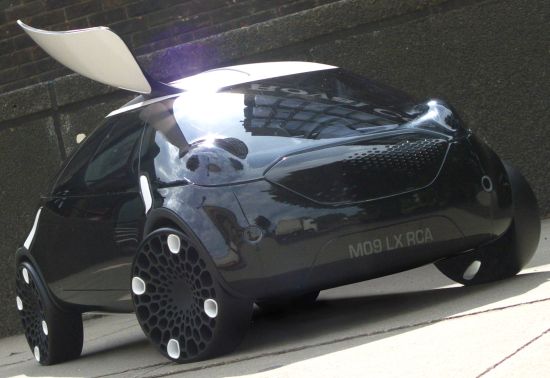
Eco Factor: Zero-emission electric car powered by solar energy.
Designed by Jukka Rautiainen, MINILUX is a concept vehicle targeted for urban dwellers who use their own car mainly for leisure purposes and rely on other forms of transport in their daily mobility. Due to its nature as a leisure vehicle, it spends long periods of time unused. When parked outside, the vehicle uses high-efficiency photovoltaic panels to harvest solar energy. It is plugged in to a domestic or public access point that enables two-way energy exchange.
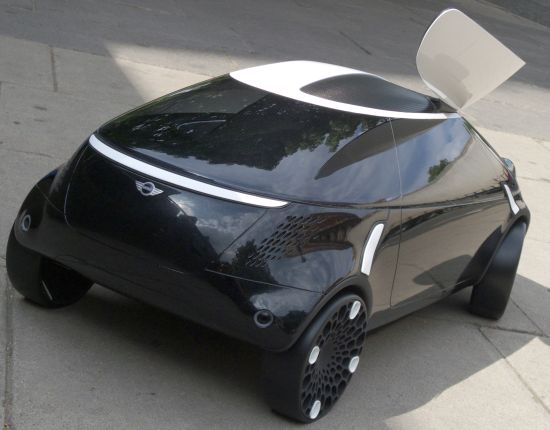
When the car’s batteries are fully charged it can feed the excess energy to the main grid and similarly substitute the lack of solar energy by charging from the main grid just like a regular plug-in electric vehicle. Annually the vehicle would have a solar powered range of 9000 miles in Central Europe and US East Coast and up to 16,000 miles in sunny locations such as California, Australia and the Middle East.

The car is powered by high efficiency Gallium Arsenide solar cells, currently used in several space applications, solar racers and in some terrestrial solar parks. These high efficiency solar panels are incorporated to opening roof panels, doubling the roof’s surface area as well as to solar curtains that cover the entire window glazing from the inside.
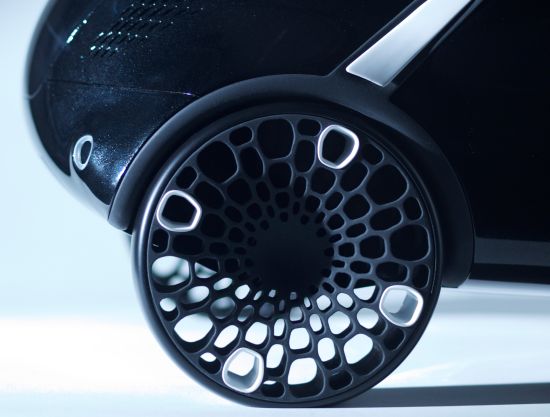
The car is optimized for two occupants with leisure gear, but unlike in most 2+2-seaters, the car has an appearance of a two-seater with a large, yet concealed trunk as a default. When needed, the backseat is formed by pressing down a part of the “deck” behind the front seats. The backseat mechanism as well as the solar curtains make use of shape memory plastics.

Tiny trusses made out of these shape memory plastics straighten and contract on electric impulse inside the material, making the component take different shapes, staying rigid when the electricity is turned off. Embedding nano-scale functionality to the material itself decreases the weight, space and need for maintenance, as the number of mechanical parts is reduced.
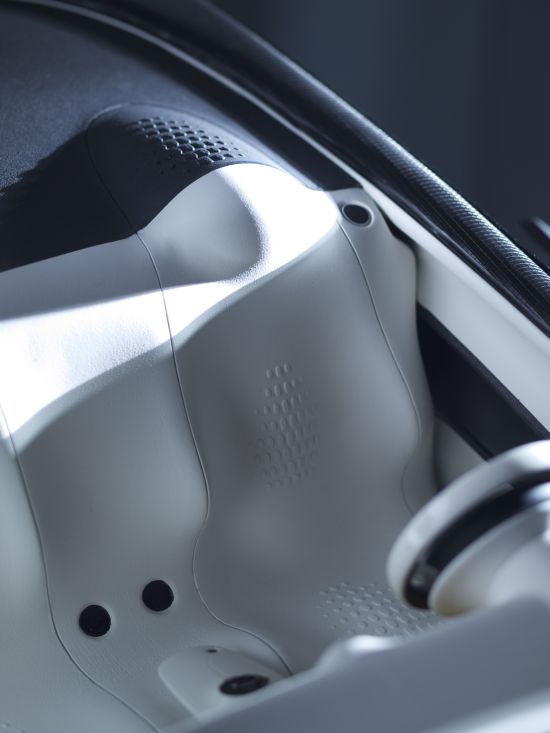
The same philosophy of adding function to material continues in the wheels that are airless, and as such have improved handling, durability, energy-efficiency and a reduced need for maintenance. Their extremely low profile and honeycomb structure with four personalization elements also give the vehicle a distinctive appearance.
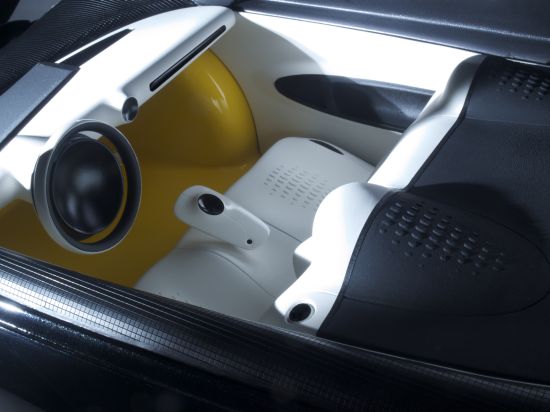
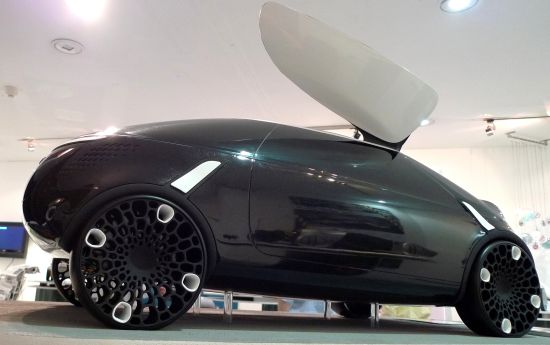
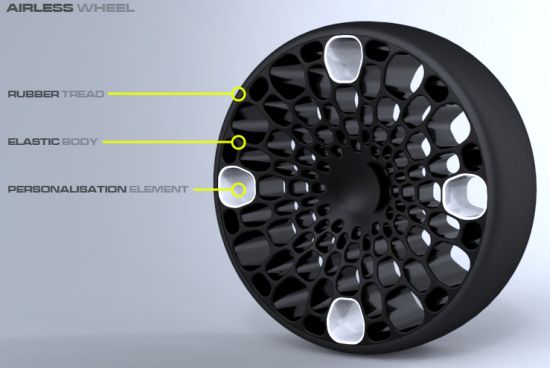
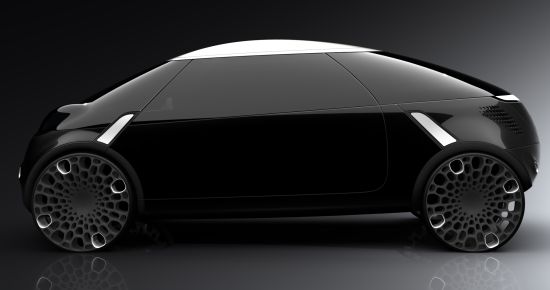
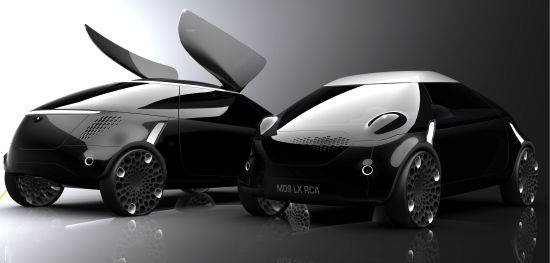
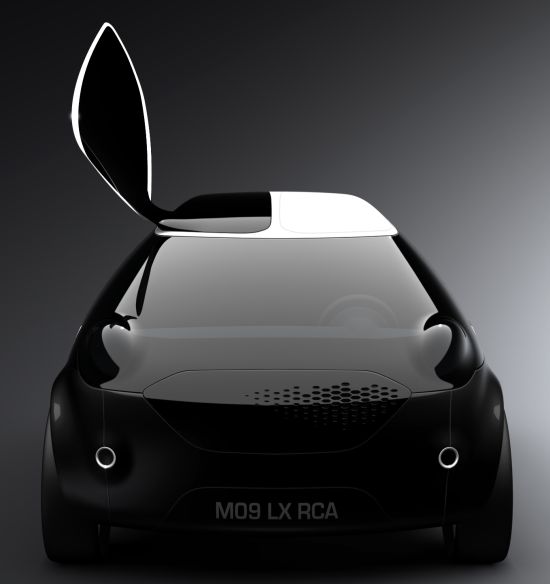


Thanks: [Jukka Rautiainen]




